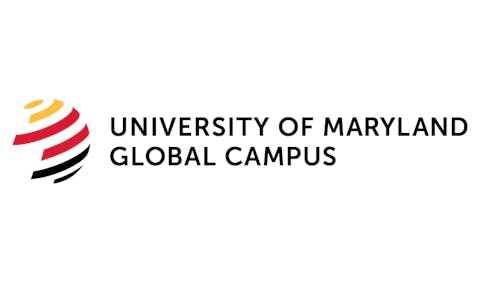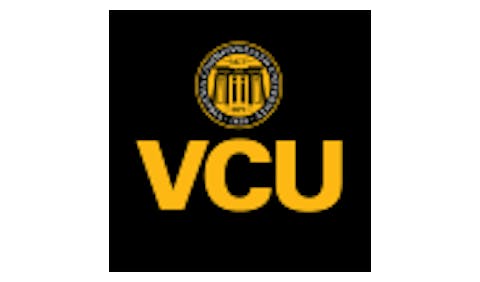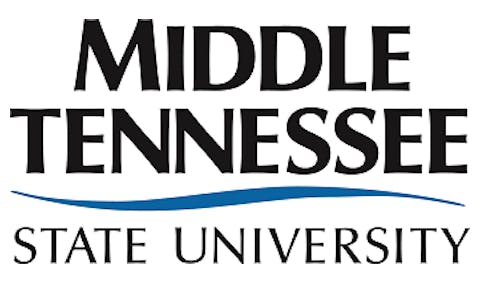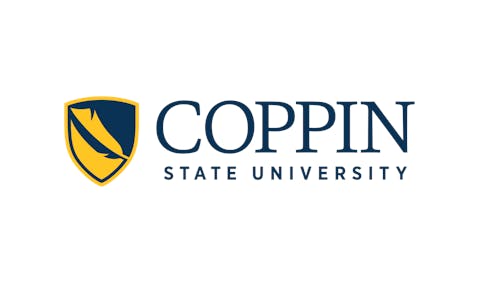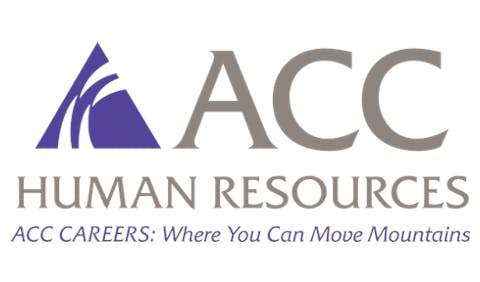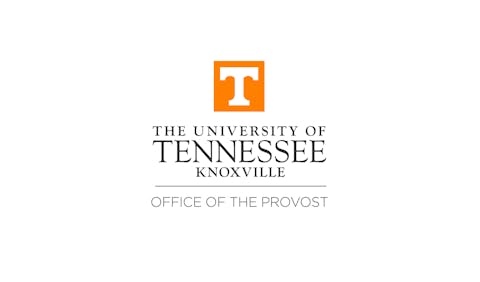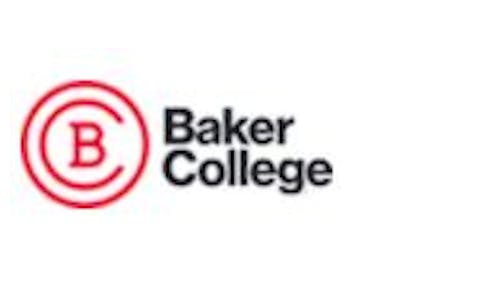Earlier in his career, Dr. Luther S. Williams spent nearly ten
years as the only faculty member of color out of seventy in his
department at Purdue University. The African American microbiologist is
now assistant director of education and human resources at the National
Science Foundation (NSF).
As an assistant director at NSF, he has set his sights on the
ambitious goal of helping colleges and universities expand the pool of
under-represented science and engineering undergraduates from its
current level of 24,000 to 50,000 students by the year 2001. In doing
so, he also intends to expand their ranks among graduate students.
There is little doubt that Williams’s experiences in the academy
and in industry are what have made him so adamant about the need for
systemic transformation among science and engineering disciplines
within higher education.
“You cannot sit in a research institution in isolation and
succeed,” he says. “You may be successful one time…but if you really
want to succeed, you need to create a national network …. Too many
people act like, `if the solution will present itself without effort,
I’m not opposed to it.’
“But anyone who takes time to understand science and engineering
knows that it is a downstream event. How can you imagine an enterprise
that is so excruciatingly competitive and so hierarchical is going to
accommodate itself to a sort of laissez faire approach to successful
participation by people who, heretofore, really were not a part of it?
“You’ve got to be pragmatic. You’ve got to have a highly specific
strategy, and it has to be sufficiently incentivized so that it is not
seen as a destructive transaction…. A variety of schools have done
this and have done this well — and they have been able to sustain it.
“To use an overworked colloquial expression, it is not rocket science.”
Succeeding at Stanford
When Dr. Noe Lozano took charge of Stanford University’s effort to
increase the number of under-represented minority graduate students
being produced by its engineering school, he knew the challenge was
great. He also felt up to tackling it.
Between 1989, the time Lozano began, and 1996, Stanford’s
engineering school increased its enrollment of under-represented
minority doctoral candidates from twenty-nine to sixty. The African
American share of this group grew from nine to twenty-four students.
The Chicano (Mexican-American) share of the cohort grew from five
students to sixteen; Puerto Ricans from 13 to 18; and Native Americans
remained constant at 2.
“Finding [competitive under-represented students] is not the
problem” says Lozano, associate dean for minority affairs at the school
of engineering. “It’s tough to get them because there is not a large
number and everyone wants them.”
By “everyone,” Lozano’s colleague Dr. Geneva Lopez explains, they
mean schools of science, medical schools, MBA programs, engineering
schools, and other professional and graduate programs. Lopez is the
assistant dean of multicultural graduate student services at the
Stanford School of Humanities and Sciences. Her school uses a minority
locator service offered by a national testing service to help identify
the most competitive African American Graduate Record Exam takers.
“We’re all competing for the same students,” she says.
To improve the engineering school’s track record, Lozano first
focused on creating a better mechanism for attracting under-represented
minority students at the master’s degree level. Next, he created an
infrastructure of support systems to ensure these students’ success.
Stanford’s Engineering Minority Programs (EMP), which Lozano
directs, engages in student recruitment; offers financial support,
advising, and tutoring services; develops student leadership skills;
and offers a host of other programs aimed at creating a learning
environment in which under-represented graduate students can excel.
Today, the program awards roughly $800,000 to new and continuing
graduate students, with an emphasis on those pursuing Ph.D.s. It also
uses university funds to leverage student fellowships and
assistantships and to attract matching funds from other sources.
One example of such a match program is a $690,590 five-year award
the school received in 1995 from the Alfred P. Sloan Foundation to
double the number of under-represented minority doctorates it produces
in electrical and mechanical engineering (see story, page 25).
The Sloan award was matched by $734,000 from the university and was
used to: provide ten new Ph.D. fellowships and twenty research
assistantships for minority graduate students; reimburse faculty for
taking student recruitment trips; provide twenty research fellowships
for promising undergraduates; and create a stronger support environment
for minority Ph.D. students.
Even with sophisticated programs like these, however, which are
credited with helping Stanford attract more Black graduate students,
the overall percentage of African Americans enrolled in the engineering
school — undergraduate through doctoral — has remained relatively
constant, hovering between 4 and 5 percent for nearly a decade.
Overall, enrollment at the school has increased by roughly 250
students. Asians and foreign students accounted for the largest share
of this growth. The percentage of Whites dropped by nearly 10 percent.
Lozano and Lopez are part of a small network of administrators at
Stanford who share the same goal — to produce more under-represented
students in science, math, engineering, and technology disciplines
(SMET, to use National Science Foundation terminology). With the
enthusiastic support of President Gerhard Caspar, these programs serve
students from the undergraduate through the doctoral level. The
progress made by the engineering school, however, hasn’t overcome all
of the challenges. And Lozano’s results are not evenly mirrored by the
university’s other math-based graduate programs. Challenges for Black
Graduate Students
Stanford graduate student Rachele Harley is pursuing a doctorate in
chemistry. She is the only Black woman in her department and explains
that in her discipline, the support mechanisms are minimal.
“The first thing you have to do when you get to Stanford is take
these qualifying exams,” she says. “A lot of people don’t pass the
first time around.
“There is not a mechanism to help you get adjusted to the lifestyle
at Stanford,” continues Harley. “No one tells you what classes to take.
No one tells you how to cope with the results of your qualifying exams,
much less the next step to get back on track. And no one tells you
about the advisory system.
“It is basically survival of the fittest,” she concludes. “And [the
faculty’s] philosophy is, `Well, we do produce some topnotch students,
so if it’s not broke, we’re not going to fix it.'”
Gayle Ramdeen, a graduate student in mechanical engineering design,
is one of the first two African American women admitted into that
division’s doctoral program. She describes the disadvantages of being a
trailblazer.
“It does add a bit of responsibility because every time you do
something, they model everyone after you,” Ramdeen says. “If you fail,
you’re failing every (African American]…. It makes you work that much
harder.”
“I had a really hard first year,” admits Trevor Clark, another
engineering student. “In my [engineering] department, getting a C is
failing. And I got a C every quarter my first year. I think it was
because the people in my department…are really, really bright and
really interested in this stuff. And I’ve never felt like that, to this
day. I’ve passed qualifying exams and I’ve done all of my courses. But
still, when I’m walking down the halls, I still ask myself what am I
doing here?”
Math student Edray Goins, who came here from the California
Institute of Technology (Caltech), says that while being a scientist
can be a lonely experience for any student, there are special
challenges for African American students.
“Being a student of color in the sciences, it is very difficult to
bring up any social issues because the other students have never
experienced [racism]…and so it is really difficult for me to talk to
[them] about just about anything.”
On the subject of whether or not Stanford has achieved true
diversity, particularly in the sciences, Goins adds that it is a matter
of perspective.
“At my undergraduate institution, the amount of diversity was
dismal,” he says. “In the sense of diversity, Stanford probably has
come closer than most universities. In terms of being this ideal
racist-free, sexist-free environment, I think Stanford has gone further
than a lot of — I don’t think I can say most — schools, but it
certainly has a longer way to go.”
With respect to further diversifying the graduate student
population, Lozano adds that there is much more to be done — not just
at Stanford, but everywhere.
“We’ve really been running on a Plessy v. Ferguson, separate but
equal model [in higher education] without really calling it that. But
that’s really what it is,” Lozano says. “We know that that’s not the
best model. But now that we’ve had enough success, we can really move
to a Brown v. Board of Education model.
“If you really truly believe in this, you will find a way,” he
continues. “Even if you are in the [U.S. District Court] Fifth Circuit,
or you’re at UCLA…. And you must be proactive, not reactive.” The
ruling in Hopwood v. Texas prohibits institutions in the Fifth Circuit
from using race to inform admissions decisions and UCLA is similarly
restricted by a Regents’ policy and Proposition 209.
Beating the Blues at Berkeley
Less than a hour northeast of Stanford on a campus perched in the
Berkeley Hills, those engaged in the work of diversifying the sciences
at the University of California are functioning under the grim shadow
of Proposition 209 and the U.C. Regents’ 1996 decision to radically
curb affirmative action.
This campus is where the pioneering Dr. Uri Triesman first
developed his approach to teaching mathematics to under-represented
minority students who were having a hard time succeeding in Berkeley’s
math courses. Triesman’s research, emphasizing teamwork, has
transformed math curriculum and pedagogy around the world.
Triesman’s doctoral advisor, Dr. Leon Henkin who also is a
mathematician, is now a professor emeritus at Berkeley. While, he says,
the affirmative action backlash has made an already difficult job even
harder, the new challenges it presents might result in even better
solutions to the problem.
“This [endeavor of achieving diversity in the sciences] is a
complex process,” Dr. Henkin says. “I’ve been volunteering as a
teacher’s aid in a local elementary school. I see lots of talent there,
but it is hard for the teachers to recognize that talent. I don’t have
an answer for how we can improve our schools for all students to let
their talent grow. But we must, in our professional societies,
understand that there is much more talent out there than we are now
finding.”
Dr. Colette Patt, director of physical sciences student diversity
programs, administers the Alliance for Minority Participation (AMP)
graduate program for the physical sciences here. She says projects like
AMP are a beacon on a campus where the ending of affirmative action has
put an abrupt halt to some initiatives that had only just begun to hear
fruit. Even though the AMP program is no longer permitted to serve only
under-represented minority students, most of the students participating
in the program fall into this category. While she is frustrated by the
new restrictions, Part also refuses to surrender.
“The situation is too dire and the needs are too urgent to lose it
all,” she says. “I’ve moved from a point of fear and uncertainty to one
of determination.”
Berkeley’s production of African Americans in the sciences was
meager even 10 before the anti-affirmative action initiatives passed.
Patt likens the loss of affirmative action to losing an incomplete set
of tools.
“In some ways, affirmative action was never a complete set of tools
for achieving diversity. It was never going to [fully] diversify
universities,” she says. “We knew it was a step up, but it was never
the whole stair case…. The removal of this huge step has forced us to
become deep thinkers, and more creative about diversity. Not that this
is a good outcome, We have not yet figured out how to do it.”
Soon after the passage of Proposition 209, Dr. William Lester, a
theoretical chemist and Berkeley professor, commenced a tour of several
historically Black college campuses in an attempt to encourage Students
attending those schools to consider pursuing graduate study in his
field. He also wanted to encourage them to not be deterred from
applying to Berkeley.
Lester says the intent of his tour was to let students on HBCU
campuses know that even though Proposition 209 and the Regent’s
decision has created new obstacles, the University is still interested
in Black students who are pursuing careers in the sciences.
Lester, who describes himself as a long-time beneficiary of
affirmative action, is the only Black faculty member in Berkeley’s
chemistry department. His career has included work in industry and for
the federal government, but he has spent the past eighteen years in
academe. In all that time, he has yet to produce another African
American doctorate in his field. His first promising Black doctoral
student is now in his third year of study.
“He is a double major from Morehouse, Phi Beta Kappa, who has a
Bell Labs fellowship. I think he has a very promising career ahead of
him,” Lester says.
According to Lester, the same characteristics that allowed him to
be a successful basketball player and scholar in college have enabled
him to become a good scientist. They will also, he believes, allow him
to find ways to continue to create opportunities for Black students,
despite the new obstacles.
The Value of Community Support
“There are not many paid employees whose job it is to look after
Black students here,” says Raymond Gilstrap, an electrical engineering
doctoral Student at Berkeley.
Gilstrap’s goal is to return to academe after graduation. The
alumnus of Florida Agricultural and Mechanical University (FAMU) says
the Support he received from a small number of administrators and
faculty here, as well as that extended by African American graduate
Students, was an important component of his initial adjustment to the
Berkeley Community.
“There is a good sense of community here,” even though it is small,
says Gilstrap, who describes the support system as much less structured
than the one he was accustomed to at his undergraduate school.
“Having a warm, caring, supportive community of color is
important,” agrees Patt, who views it as an essential component if
Berkeley is to continue to attract African American scientists.
She also believes attracting such Students in the sciences is germane to the university’s purpose.
“We [public institutions] have a righteous responsibility.” Patt
says. “Part of our mission is to serve the public interest. We have an
obligation to do this.”
Making Success Contagious
Dr. Anderson Smith, dean at the Georgia Institute of Technology’s
school of science, wishes his graduate program had the same favorable
track record that Georgia Tech’s engineering school does in recruiting
and graduating Black graduate students. The school of science’s plight
resembles that of a teenager struggling to get noticed beneath the
shadow of a more accomplished older sibling.
“We do a good job getting a share [of Black grad students], but
with the historically Black colleges in Atlanta all clustered right
together, there are schools around the Country that do a better jot) at
recruiting Morehouse students than Georgia Tech does,” he says. “I want
to find out why.”
One strategy for improving its efforts is a handful of new joint
research arrangements the school has established with nearby
Clark-Atlanta University, Morehouse, Spelman, and Morris Brown colleges.
“The idea is you get people involved in research early [while
they’re undergraduates], and they might decide it is too much of a
hassle and too much of a step back to start all over somewhere else
because they’ve already got the research relationship established here.”
Unlike the engineering school, Georgia Tech’s School of Science
isn’t ranked at the top of its discipline. Its divisions are much more
specialized toward applied science than many of its peer institutions
around the country, Smith says. While these factors may play a role in
why there are so few Black graduate students at the school, the main
reason is that the school’s departments haven’t been as strategic or
aggressive in their approach to recruiting or retaining Black students
as the engineering school has.
“We’re doing a lot of things [now] in the Atlanta community and the
science community to have the Georgia Tech name mean science as much as
engineering,” Smith says.
Nevertheless, with Georgia Tech now adhering to a race-blind
admissions policy, it is unclear what impact this will have on Smith’s
efforts.
One recruitment program that has, in recent years, begun to help
Smith’s school — and primarily benefits the engineering school — is
called FOCUS. Founded in 1992, the program’s mission is to demystify
the concept of graduate education among under-represented science and
engineering undergraduates and provide them with a road map for how to
pursue a Ph.D. in these fields. Roughly 180 undergraduates from around
the country participate in the three-day program annually, and a good
share of them — roughly 10 percent wind up enrolling at Georgia Tech.
FOCUS is paid for, in part, by a grant from the Arthur P. Sloan Foundation.
“This program has increased visibility of graduate education among
Black undergraduates, and has changed their mindset,” says program
director Robert Haley.
The Might of MIT
The weather in Cambridge, Mass. can be bitter cold in winter. So
can the intellectual and social climate at the Massachusetts Institute
of Technology, according to two graduate students.
“When I first came here, I was overwhelmed with grief,” recalls
Tina Savage, a second-year graduate student who is pursuing her
master’s degree in mechanical engineering. She also is co-chair of the
MIT Black graduate student association. “I can remember saying this
could never be home. But then, I had to re-evaluate who I was and what
I was trying to accomplish.”
Once she did that, Savage began to find other people on campus who
felt the same way she did and with whom she could identify.
“One reason why I decided to chair the educational support
committee was to try to find other [Black students] to come here,” says
JoRuetta Roberson, a first-year, master’s degree candidate in MIT’s
mechanical engineering program. “People are scared of the name MIT. You
can deal with it, but you have to have a strong mind.”
Roberson emphasizes that while the MIT Black graduate student
community provides her with additional support, it is her inner
determination to be successful that allows her to persevere.
Despite the persistent chill these students complain about, MIT has
been a pioneer among science and engineering institutions in the effort
to include more African Americans at the graduate level in SMET
disciplines. It now has 276 under-represented minority graduate
students out of 6,000 students (4.6 percent).
“It has taken us almost twenty years to get back to where we were
in the 1970s, — says Dr. Isaac Colbert, associate dean of graduate
student affairs at MIT, about the institute’s production of Black
graduates.
Colbert notes that among the institute’s first-year
under-represented graduate Students, roughly half of them are now
African American. Many of MIT’s master’s degree students are recruited
from the Graduate Degrees for Minority Engineering and Science program,
known as GEM (see story).
Colbert points out that MIT has produced roughly 11 percent of all
practicing Black physicists in the country, and that it is a leader in
producing African American doctoral candidates in the field of
engineering.
MITs summer research program is a model for introducing
under-represented baccalaureate students to research and opportunities
in graduate education, and roughly 90 percent of its participants have
gone on to some form of graduate education.
Once administrative buy-in and financial support are secured, and a
strategy for recruiting and retaining under- represented graduate
students is in place, Colbert says, there is still one other critical
component that must be present for any program to succeed.
“It requires the will of the faculty to make a difference.”
RELATED ARTICLE: How Large is the Pool?
Those who recruit African Americans into math-based disciplines often complain that the “eligible” pool is too small.
Eligibility criteria vary from program to program, and many factors
can influence admissions decisions. However, applicants generally
present grade point averages (GPAs) of at least 3.0 and cumulative
Graduate Record Exam (GRE) scores of 1000 or better. Most graduate
schools require the submission of GRE scores as a part of the admission
application.
In 1993, according to a sample study conducted by the Frederick D.
Patterson Institute of data collected by the National Center for
Education Statistics, the percentage of African American undergraduates
who completed their baccalaureate degrees with a GPA of 3.0 or better
was roughly 46 percent. This compares to 72 percent of Whites and 70
percent of all bachelor’s degree recipients.
Since 77,872 African American students graduated with bachelor’s
degrees in 1993, 46 percent would constitute approximately 36,000
students. The number of African Americans who took the GRE in 1995 was
22,667, representing 8 percent of all examinees. The mean scores among
these students was 389 on the verbal section, 409 on the quantitative
section, and 423 on the analytical section. (For further detail see
attached chart.)
It should be noted that more than twice as many African American
women took the exam as African American men, but the mean score was
higher for men in each section.
Data from the National Science Foundation show that in 1993,
African Americans represented roughly 5 percent of the overall science
and engineering graduate student population, including the social
sciences. Black students majoring in the social sciences constituted
roughly 37 percent of these. Those pursuing science and engineering
degrees outside of the social sciences, therefore, amounted to slightly
more than 10.000 students, including all years of study.
GRE General Test Score Information by
Ethnic Group and Sex: 1995-96
GRE General Test
Score Information
Examiners Verbal
Group Number Percent(*) Mean SD(**)
American Indian 1,731 1 461 105
Men 683 <1 475 108
Women 1,048 <1 452 102
Asian/Pacific 12,368 4 489 115
Men 5,030 2 494 119
Women 7,338 3 486 112
Black/African 22,667 8 389 93
Men 6,487 2 399 99
Women 16,180 6 385 91
Mexican American 5,582 2 438 99
Men 2,120 1 450 102
Women 3,462 1 430 96
Puerto Rican 2,775 1 407 101
Men 1,075 <1 416 102
Women 1,699 1 401 100
Other Hispanic 5,361 2 455 105
Men 1,928 1 474 110
Women 3,433 1 444 100
White 220,055 79 496 104
Men 80,784 29 513 106
Women 139,271 50 486 101
Other 6,642 2 514 120
Men 3,049 1 533 117
Women 3,593 1 497 120
Total 277,181 100 484 109
Men 101,157 37 502 111
Women 176,024 64 474 106
GRE General Test Score Information
Quantitative Analytical
Group Mean SD Mean SD
American Indian 490 129 516 129
Men 533 135 532 133
Women 463 117 506 126
Asian/Pacific 597 124 558 129
Men 635 118 567 133
Women 570 121 552 125
Black/African 409 116 423 115
Men 441 129 426 121
Women 397 107 422 112
Mexican American 470 124 481 122
Men 512 129 493 127
Women 443 112 474 118
Puerto Rican 465 125 457 120
Men 509 131 468 122
Women 437 112 450 118
Other Hispanic 491 126 500 127
Men 538 131 518 130
Women 465 116 492 124
White 538 123 564 119
Men 585 124 578 122
Women 511 115 557 117
Other 543 132 557 134
Men 583 128 573 130
Women 509 126 543 135
Total 527 129 548 127
Men 574 130 563 130
Women 500 121 540 125
Note: A total of 280,446 U.S. citizens took the GRE General Test in 1995-96 and 99 percent responded to questions in this table.
(*) Percentages in this table are based on the column total and are rounded to the nearest integer.
(**) Indicates Standard Deviation
Source: Educational Testing Service
RELATED ARTICLE: Changes to MESA and Meyerhoff programs
The affirmative action backlash that is sweeping the country has
resulted in changes to two of the nation’s most renowned programs aimed
at boosting the competitiveness of under-represented students in
math-based disciplines. Both the California MESA program, based in
Oakland, and the Meyerhoff scholars program, based at the University of
Maryland-Baltimore County, are now open to students of all races.
For more than a quarter century, MESA — an acronym for
Mathematics, Engineering, Science Achievement — has provided an array
of programs aimed at strengthening the science and math skills of
under-represented students at the pre-college and undergraduate level.
By offering them access to educational enrichment programs, research
opportunities, tutoring, internships, mentors, and academic career
counseling, it has been a critical feeder of students into all of the
University of California (UC) system campuses.
Some MESA students go on to attend institutions outside of the UC
system nationwide, and many who complete baccalaureate study are
believed to go on to pursue graduate degrees — although the program
does not keep precise data on this segment of its graduates. MESA does
know, however, that roughly 70 percent of its graduates pursue B.S.
degrees in math-based fields.
“We’ve spent so Much time retooling to the new [Proposition 209]
environment, — says director Michael Aldaco. “We knew we couldn’t
continue to focus on only [Linder-represented minorities]. We now serve
educationally disadvantaged students with a focus on students who
suffer from low rates of UC eligibility, irrespective of race or
gender.”
So far, most of the students participating in the program continue
to be under-represented minorities — with African Americans comprising
28 percent of MESA participants.
Despite these changes Aldaco says MESA is stronger than ever.
The Meyerhoff Scholars program, founded in 1989 at the University
of Maryland-Baltimore County (UMBC), was originally designed to serve
African American undergraduates. Its goal, until recently, was to
interest Black Students in pursuing Ph.D.s in the sciences, and support
them toward attaining this goal through a variety of support programs.
Under the new policy, the program is now open to Students of all
racial groups. As a consequence, it has gone from serving a 100-percent
African American student clientele to an 80-percent African American
clientele. Each year, Meyerhoff sends roughly forty to fifty of its
graduates to graduate degree programs across the country.
Program co-founder Dr. Freeman A. Hrabowski altered the program as
part of a strategic move designed to guard it from attacks by
affirmative action critics.
Meyerhoff scholars Cylburn “Cyl” Soden and Lea Hairston have mixed reactions to what the new policy means.
“Why are we moving backwards?” asks Hairston, a recent graduate who
is now pursuing her doctoral degree on the UMBC campus. “I disagree 100
percent with [the administration’s decision] to integrate the program.
I think it fundamentally goes against what the program was created for.”
“I wouldn’t say that opening up the program takes away its entire
purpose,” says Soden, a junior majoring in biochemistry. “But I would
say it definitely took away [valuable Afrocentric elements] from the
program.”
RELATED ARTICLE: Faculty Disappointments
In his more than twenty-five years as an applied physics professor
at Stanford University, Dr. Arthur Walker says one of his greatest
career frustrations is that he has yet to produce an African American
doctoral physicist in his area of specialization.
He explains that while Stanford has had more success producing
Black physicists than many of its peer institutions, and the
university’s administration has been very amenable to the cause, the
numbers of African American graduate students in his field has actually
declined. This, he adds, ultimately has a negative affect on faculty
recruitment as well.
“I am the only Black [full] professor in all six of our science departments, out of 180 faculty members,” Walker says.
Three years ago, his colleague, Dr. Clay Bates, another physicist,
left Stanford for a position at Howard University. One of the reasons
Bates says he left was to improve the pace at which he might develop
Black scientists.
Walker has observed that in recent years, the commitment of some of
his faculty colleagues to recruiting and retaining African American
students seems to have waned.
“Some who are negative and not supportive of diversity have become
more emboldened by the general change in the political climate,” he
says.
Comparing the situation in physics to that of engineering, Walker
says the main difference is the a lack of a strategic plan. “Science
departments simply have not tried very hard,” he says.
In his twelve years as a Stanford mechanical engineering professor,
Dr. Godfrey Mungle also is disappointed that he has not yet been able
to produce a Black doctoral scholar in his field. Mungle is a
Trinidadian immigrant of East Indian descent.
“My daughter is [a teenager],” he says. “When I first got started,
I thought I’d have produced several [scholars of color] by now —
people who might teach her when she got ready to go to college. But
I’ve only produced one [not African American] in twelve years.”
COPYRIGHT 1998 Cox, Matthews & Associates
© Copyright 2005 by DiverseEducation.com











